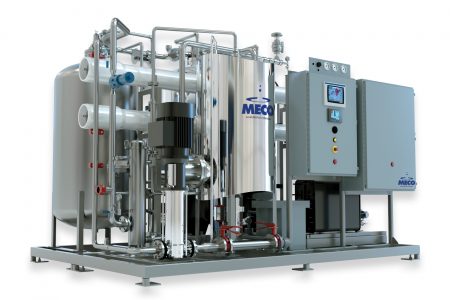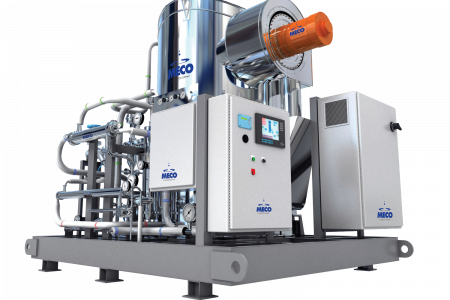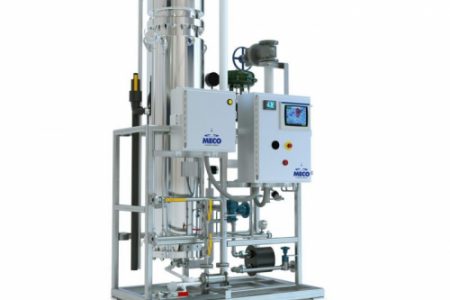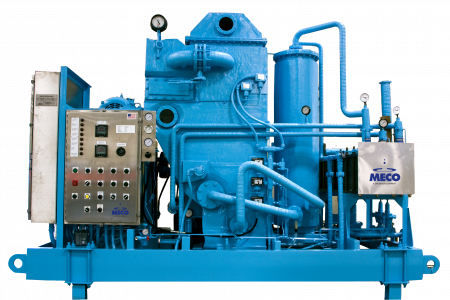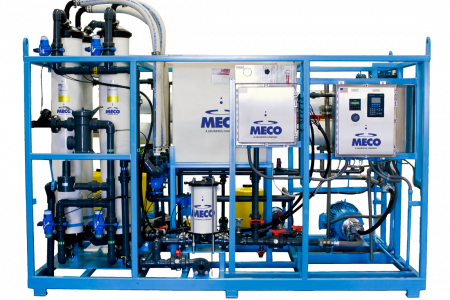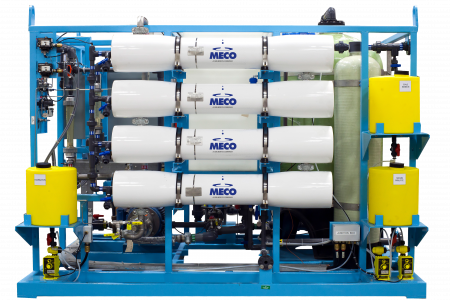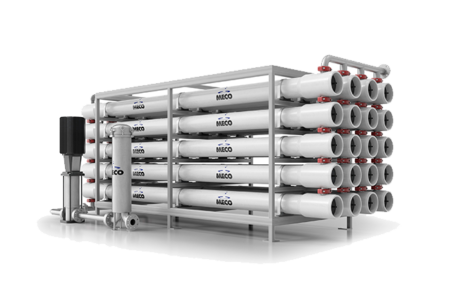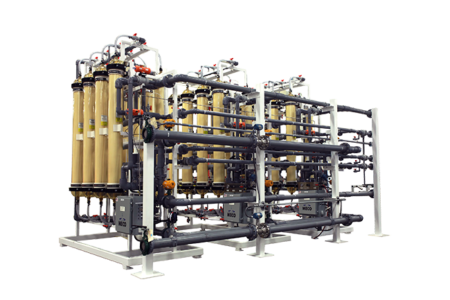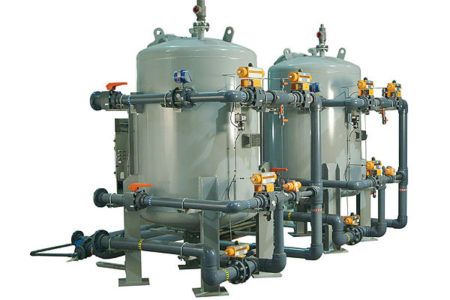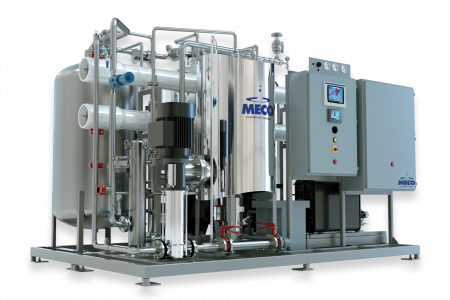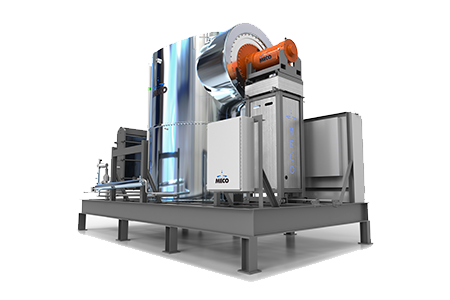Designed with sustainability in mind, the MASTERpak™ MICRO unifies loop operation and make-up operation into one simple system customized to your plant requirements. Our systems consistently produce water required for Alkaline water electrolysis (AWE), Proton Exchange Membrane (PEM), and Solid Oxide Electrolyzer Cell (SOEC) including all ASTM types I, II, III, IV grade water quality.
The MASTERpak™ MICRO reduces your environmental water and energy footprint, lowering OPEX cost for chemicals, water, electricity, and square footage while reducing the risk of biological loop contamination and potential product contamination.
- Complete turnkey ultrapure water system
- Product water quality meets Alkaline water electrolysis (AWE) and Proton exchange membrane (PEM) electrolysis requirements
- Supported by MECO’s full range of on-site services, including service deionization tanks that are regenerated in a dedicated plant, eliminating the risk of loop contamination from co-mixing resin with an industrial or water reuse application
- ASTM Type I, II, III, and IV Grade Water Quality
- Makeup or generation capacities from 1,000 – 30,000 GPD
